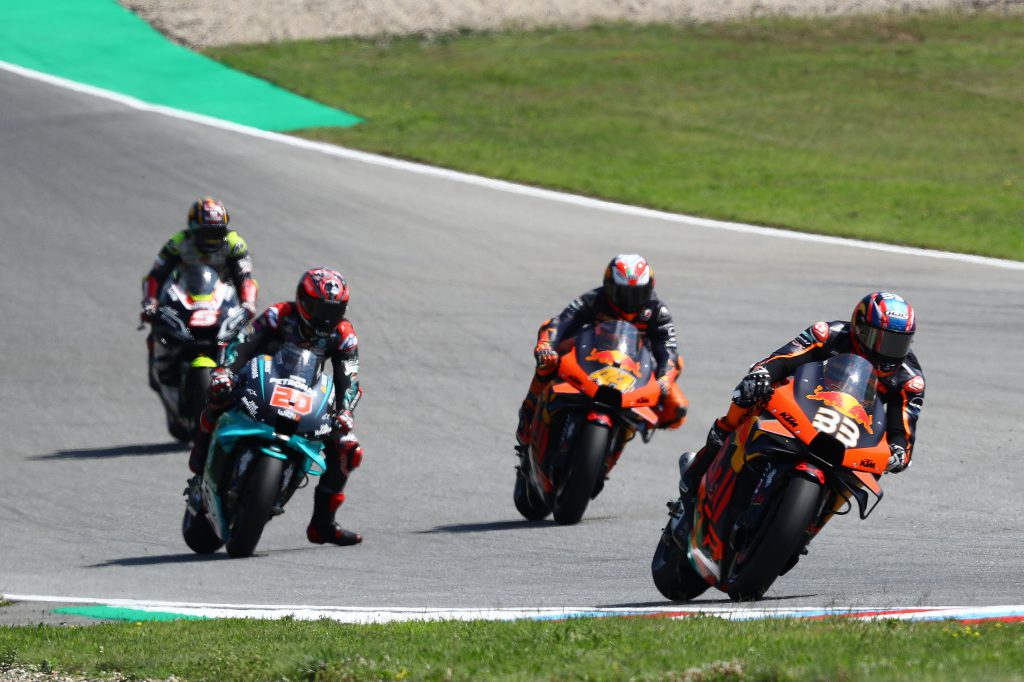Twelve months ago, KTM’s MotoGP project looked to have stalled.
The team was making small steps forwards with its bike but improvement had slowed to walking pace, and planned superstar racer Johann Zarco had walked away in disgust halfway through his first season.
So how on earth did the Austrian manufacturer manage to turn the project 180 degrees in only a matter of months, which led to rookie sensation Brad Binder taking a remarkable victory last Sunday at the Czech Grand Prix?
At the heart of this night-and-day change is a highly-motivated team of engineers, staff, racers and test riders whose combined experience vastly outweighs KTM’s time in MotoGP.
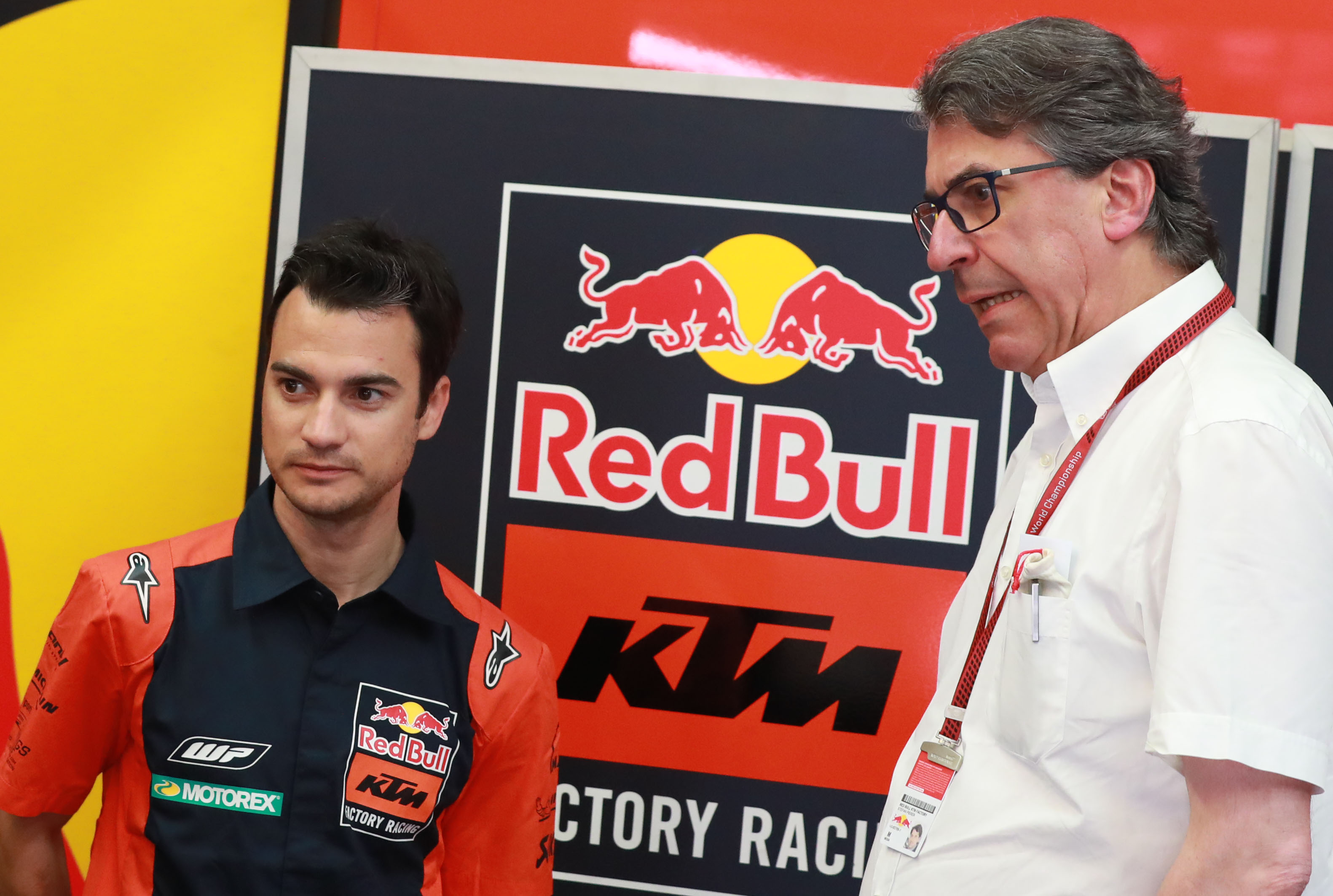
Leaning heavily on that squad and their combined decades of knowledge, KTM managed to make an exponential shift forward with the 2020 RC16 machine and delivered a bike this season that is the match of any other squad on the grid.
That perhaps came as something of a surprise, but in reality it was something that was always going to happen one day given KTM’s success elsewhere. Dominant in the offroad world, from Dakar to Supercross via MXGP, KTM’s outspoken CEO Stefan Pierer (above, right) had made it a manufacturer used to winning.
And while KTM might not have vast experience in the world of on-track racing, it knows how to develop a race bike – and it was sticking to the project’s long-term plans that motorsport boss Pit Beirer says allowed it to finally succeed in its fourth season.
“We built a bike out of nothing, and realised that we were 3.5 seconds a lap back on the front guys,” the 1999 250cc motocross championship runner-up (below, white shirt) admitted after Sunday’s race.

“It’s quite easy to close down the first two seconds, but to close down the final tenths while still having a bike that is rideable for lots of guys isn’t easy.
“I wasn’t disappointed with the 2019 performance because we made good progress, but it was still a critical bike to ride. In the beginning, every race we brought new parts. We did that for two years.
“But we knew we had to stop that in year three to allow the engineers to develop the 2020 bike. There’s a critical moment in development when you have to start developing next year’s bike during this year’s season, and then when your riders are fit and fresh in November you let them confirm it.”
And that’s what we’re seeing now, with the benefit of an ultra-strong test team headed up on track by former title fighter Dani Pedrosa (below) and veteran KTM tester Mika Kallio. Under direction from Pedrosa’s former crew chief Mike Leitner, Beirer believes that their efforts in the past year have now started to pay off.
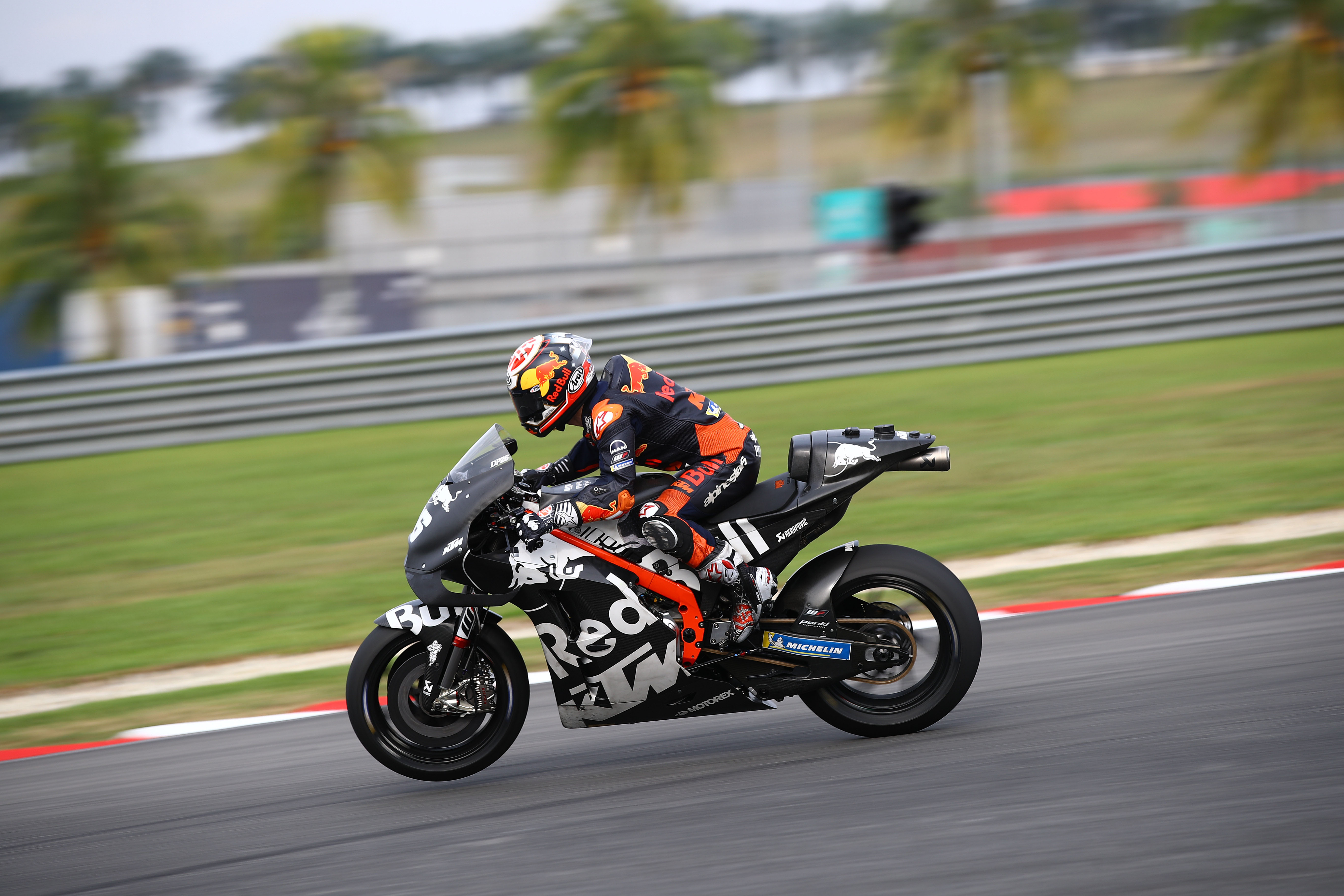
“We built that bike with Dani and Mika,” he says. “Mika was a great guy in bringing the bike to where it was, Dani gave it a little bit of a different direction, and the engineers just learned so much.
“Of course we can take a little from other manufacturers, but we have our own chassis, our own suspension, our own engine.
“We could never copy others, so we had to learn it the hard way. That experience gets more and more – it’s like packing a travel bag that gets fuller all the time. That’s why the changes to his year’s bike are completely logical.
“It still wasn’t proven to be better, because we tested and tested and tested and it looked good – but then the damn corona came. I was sure we could have proved in Qatar, but I had to motivate people all over again, from our board of directors to our riders.”
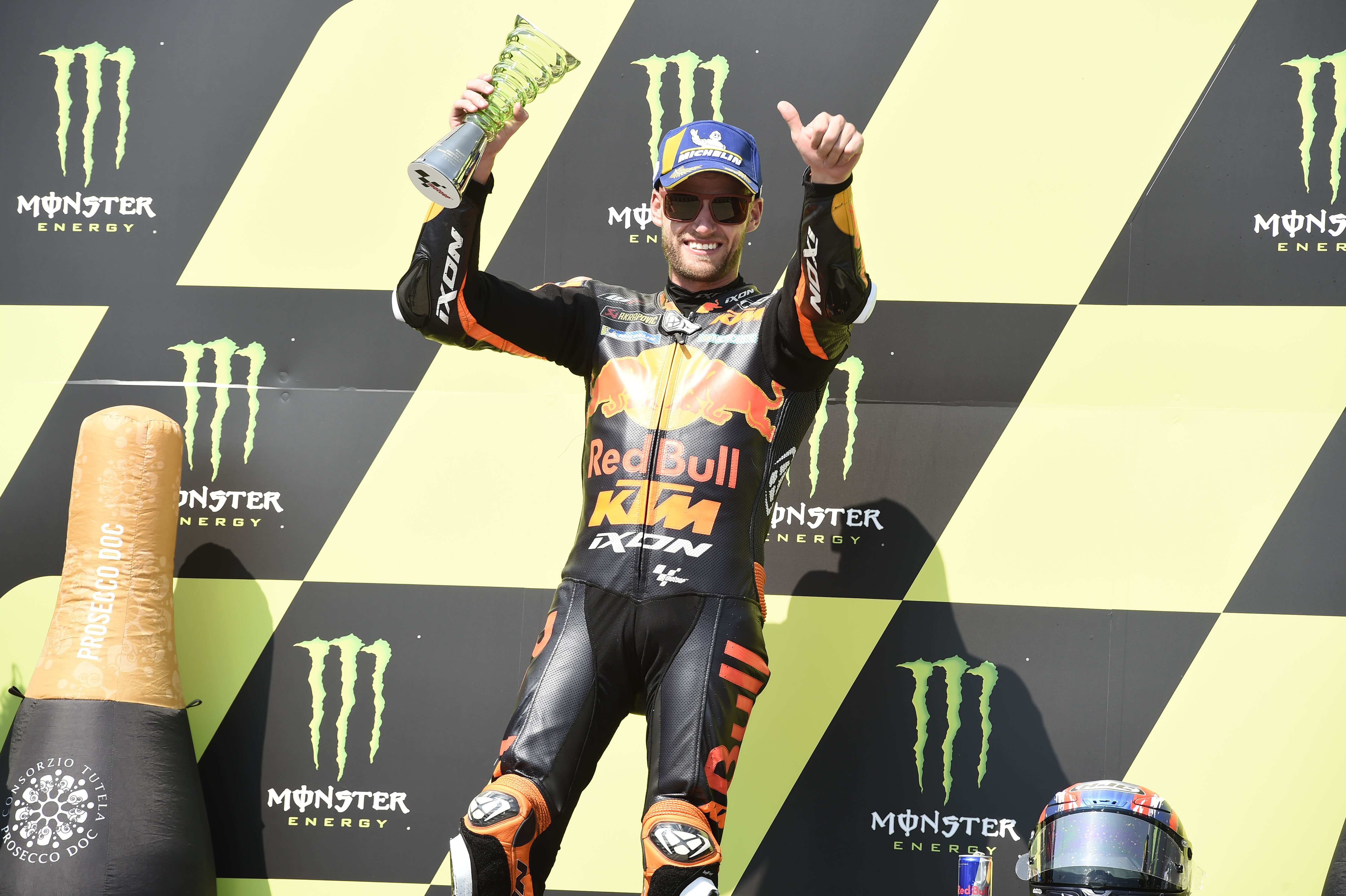
It also ends five years of doubt and criticism within racing about KTM’s choice in sticking with what it knew and building a MotoGP bike with a steel trellis frame and WP suspension.
The only team on the grid not using Swedish suspension expert Ohlins in favour of its own in-house brand and the only one not to build a box aluminium chassis, KTM’s Sunday result in large part vindicates that decision for Beirer.
“If you’re leading a race department with over 100 people and there was any doubt about your materials then you can’t succeed,” he says. “It’s not a marketing strategy – we learned how to build motorbikes with steel trellis frames and that’s the knowledge we have.
“Steel is three times harder than aluminium and it allows us to build a much smaller chassis while still being lighter than any other out there. It’s not about the material – it’s about knowing what to do with it, how to give the rider the flex they want from it. For the rider it doesn’t matter whether it’s steel or aluminium as long as you can give the rider the feeling.”
And while the project’s first win might have been an incredible gift, the icing on the cake was to do it with Binder – a rider who has won at Moto2 and Moto3 level on a Red Bull-backed KTM – justifying the entire KTM development structure.
Beirer told The Race it was an incredible feeling even though Pol Espargaro’s crash made it somewhat bittersweet.
“I feel like I’ve got two hearts in my chest,” he says. “From the work and risk Pol (below) and his crew put into the project, he was the person to deserve the first win. He fought like a lion for us on good days and bad, and he was a part of that win. I feel sorry for him.
“But to win it with Brad is the nicest thing that you can do as a manufacturer. We founded the Rookies Cup with Red Bull and we found a kid with a dream to be a MotoGP rider. We did Moto3 with him and he became a champion, and then we took him to Moto2.
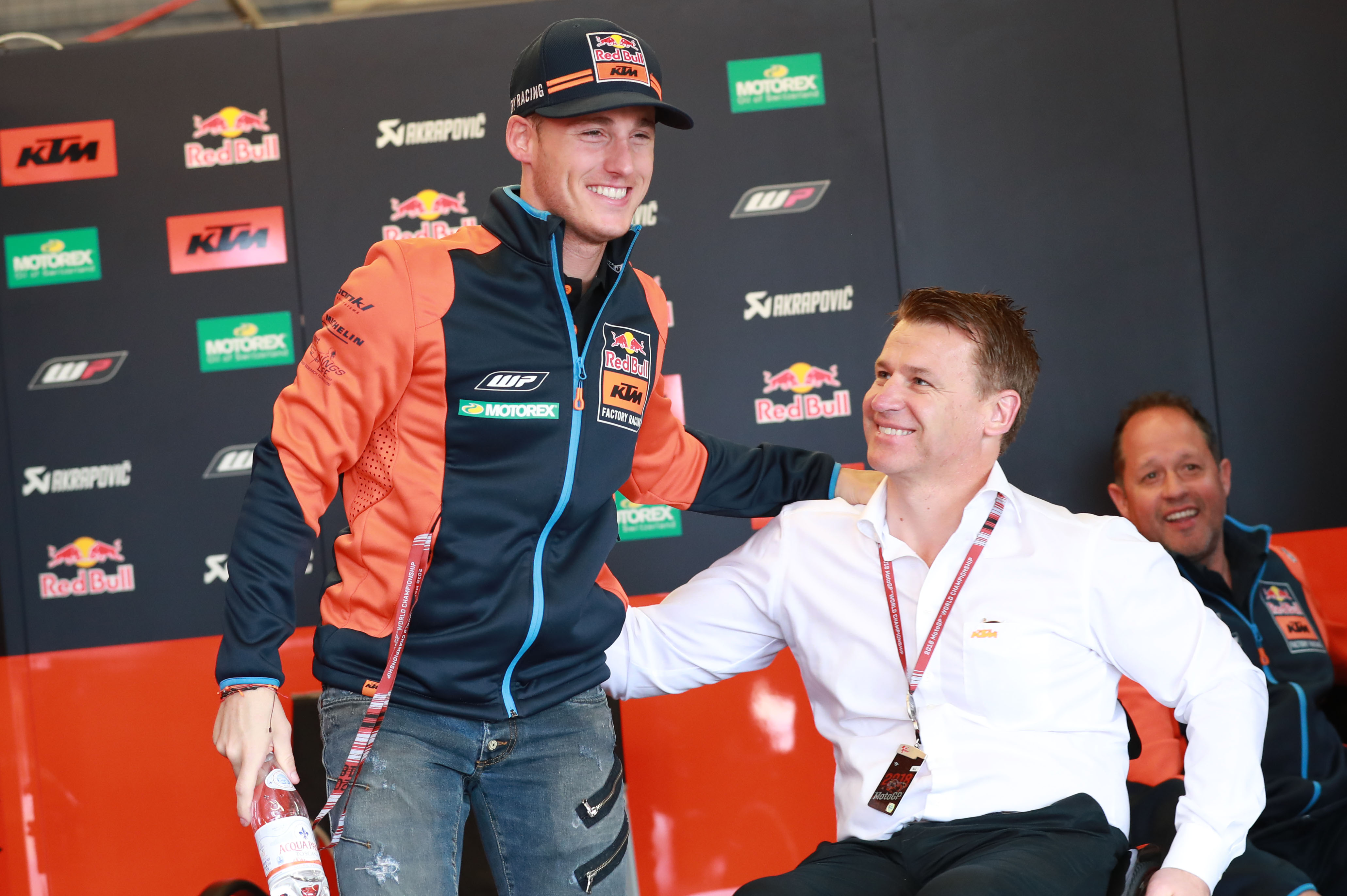
“We had a hard time there, but we got the payback for it on Sunday. I have always told the board that we needed to have a Moto2 team because I didn’t want to lose a Moto3 world champion to anyone else in the world.
“We’ve seen in off-road that we become friends with young riders, we make them part of our family, and the closer you grow the stronger the team is. We rarely lose motocross riders if they win championships with us – but on track, they were snapped up by a Moto2 team if they won and they wanted to stay with us if they lost!”
So what comes next for the KTM project? Should its success continue, the next win should mean it loses its status as one of MotoGP’s two concession teams and the extra development and testing freedom that comes with that rule. Rather than worrying about that, Beirer is very much looking forward to it.

“To speak about losing the concessions was the last thing we were thinking about last week! But whenever it happens, we’re ready to take it because it’s a huge compliment in this class,” adds Beirer. “We had the benefits we needed as a newcomer, but we’re ready to make the switch now.
“It was a nice thing to have, the extra engines and test days, at the start, but we were always aiming towards losing it. If you told me now that it was coming soon, I’d sign up right away, because that means more podiums would be coming for us, too!”


